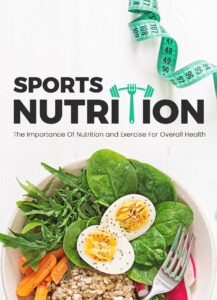The Role of Rest and Recovery in Fitness

Looking for more amazing products? Check out our online store and explore our collection here! Happy shopping!
Before diving in, please note: This post is for informational purposes only. If you’d like to know more about how we approach topics, feel free to check out our friendly Disclaimer Page.
Hey there, amazing readers! 
We’re committed to delivering quality posts, and your support (even just sticking around despite the ads) means everything to us. So, bear with us, and thanks for helping us keep the good vibes rolling. Now, on to the fun stuff!
TRANSLATE BUTTON AT THE END OF THE ARTICLE
A Quick Overview
When we dive into the fitness journey, it’s easy to get all fired up about workouts, meal plans, and hitting that magic number on the scale.
However, let’s take a step back and talk about something that often gets overlooked: rest and recovery.
They are essential components of any training plan.
Ignoring them can derail your progress and lead to burnout.
So, grab a cozy blanket and settle in as we explore how rest and recovery can supercharge your fitness goals!
Why Rest and Recovery Are Key to Your Fitness Goals
I remember the days when I thought the more I worked out, the better my results would be.
I’d pound the pavement for hours, thinking I was the epitome of dedication.
Spoiler alert: I ended up tired and frustrated.
It turns out that rest and recovery are just as crucial as the workouts themselves.
Your muscles need time to heal after strenuous exercise.
When you challenge your body, tiny tears occur in muscle fibers.
Rest days allow these fibers to repair and grow stronger.
Without adequate recovery, you risk overtraining, which can lead to injuries, fatigue, and a decline in performance.
Let’s not forget about mental recovery!
We often focus so much on physical fitness that we neglect our mental well-being.
Taking time to relax can reduce stress, improve your mood, and keep you motivated.
When you give your mind and body a break, you’re setting yourself up for long-term success.
So, what can you do to incorporate rest effectively?
Think of it as part of your training plan.
Schedule those rest days just like you would any workout.
And hey, this doesn’t mean becoming a couch potato!
It could mean light activities like yoga or a walk in the park.
The key is balance.
Understanding the Science Behind Muscle Recovery
Let’s delve into the nitty-gritty of how our bodies recover.
When we exercise, our bodies go through a process called muscle hypertrophy.
This process involves breaking down muscle fibers and rebuilding them stronger than before.
But for hypertrophy to occur, the body requires sufficient rest.
During recovery, several physiological processes are happening:
Protein synthesis: This is where the magic happens!
Your body uses amino acids from protein to repair muscle tears and build new fibers.
Discover "SUPERFOODS: The Key to Health and Balance
"
Glycogen replenishment: After a tough workout, your body’s glycogen stores (the energy reserve) deplete.
Recovery allows these stores to refill, powering your next workout.
Hormonal balance: Hormones like cortisol and testosterone play a significant role in recovery.
Overtraining can increase cortisol levels, leading to fatigue and decreased performance.
Sleep is a game-changer in this process.
During deep sleep, the body releases growth hormone, which is vital for muscle repair.
This is the reason why hitting the hay after working out can feel so rewarding!
The Benefits of Quality Sleep for Active Individuals
Now, let’s talk about sleep.
Ah, yes, that magical yet elusive state we all crave!
Imagine this: you’ve had a long day of work, workouts, and maybe a bit of stress.
You crawl into bed, and as soon as your head hits the pillow, you drift off into a world of dreams.
That’s where the real fitness magic happens!
Quality sleep isn’t just about quantity; it’s also about the quality of that sleep.
Here are some perks of getting those Z’s:
Improved recovery: As mentioned earlier, sleep promotes hormone release and muscle repair.
Enhanced cognitive function: Good sleep helps with focus, memory, and decision-making, making you sharper in your workouts and daily life.
Boosted immune system: Regular quality sleep can enhance your immune responses, helping you stay healthy and ready to train.
Better mood: A good night’s sleep can elevate your mood and motivation, making you excited for your next workout.
To improve sleep quality, consider establishing a consistent sleep schedule, creating a calming bedtime routine, and limiting screen time before bed.
Your future self will thank you!
Active Recovery: A Fun Way to Recharge Your Body
You might be surprised to learn that recovery doesn’t mean lying on the couch all day.
Active recovery can be a delightful way to keep moving while allowing your body to heal.
Picture this: you’ve just crushed a week of intense workouts.
Instead of jumping back into another sweat session, consider an active recovery day.
Active recovery can include:
Gentle yoga: Stretching and mindfulness can help reduce muscle soreness.
Walking or light jogging: Keep the blood flowing without overexerting yourself.
Swimming: A low-impact activity that works all your muscles and feels great!
Cycling at a leisurely pace: Enjoy the scenery while letting your legs recover.
These activities increase circulation, helping to reduce muscle soreness and stiffness while keeping your body in motion.
Plus, they can be a ton of fun!
Invite a friend and make it a social event.
Nutrition’s Role in Enhancing Recovery Processes
I can’t stress how important nutrition is for recovery.
After a workout, your body needs the right fuel to recharge.
Think of your body like a car: if you don’t put in the right kind of gas, it won’t run smoothly!
Discover "Sports Nutrition: The Importance of Nutrition and Exercise for Overall Health
"
Here’s a quick breakdown of what you should focus on:
Protein: Essential for muscle repair.
Aim for lean sources like chicken, fish, eggs, or plant-based proteins.
Carbohydrates: They replenish glycogen stores.
Whole grains, fruits, and starchy vegetables are excellent choices.
Healthy fats: Avocados, nuts, and olive oil support overall health and hormone production.
Hydration: Don’t forget to drink plenty of water!
Dehydration can hinder recovery and performance.
Consider a post-workout snack or meal that combines protein and carbs.
A smoothie with spinach, banana, and protein powder or a turkey sandwich on whole-grain bread could do wonders for your recovery.
Stretching Techniques to Aid Muscle Relaxation
Stretching is the unsung hero of recovery!
It’s easy to skip, especially when we’re in a hurry.
However, incorporating stretching into your routine can significantly enhance recovery and flexibility.
Here are some effective stretching techniques:
Static stretching: Holding a stretch for 15-60 seconds helps with muscle relaxation.
Focus on major muscle groups you’ve worked.
Dynamic stretching: Incorporate gentle movements to increase blood flow before a workout.
Think leg swings or arm circles.
Foam rolling: This self-myofascial release technique can reduce muscle tightness and soreness.
It feels a bit like giving your muscles a massage!
Try to include stretching after every workout.
Not only will it aid recovery, but it will also improve your overall flexibility and may even reduce the risk of injury.
The Impact of Stress Management on Recovery
Stress and fitness go together like oil and water.
High stress can wreak havoc on your body and recovery processes.
When we’re stressed, our bodies produce cortisol, which, as mentioned earlier, can hinder recovery and performance.
Here are some handy stress management techniques:
Mindfulness and meditation: A few minutes of deep breathing can do wonders.
Close your eyes, take deep breaths, and focus on the present moment.
Regular physical activity: Ironically, working out can reduce stress too.
It helps release endorphins, making you feel better.
Socializing: Spend time with friends and loved ones.
A good laugh can lighten your mood and lower stress levels.
Hobbies: Engage in activities you love, whether it’s painting, gardening, or playing an instrument.
Using these techniques can significantly enhance recovery by lowering stress levels and creating a more positive mindset!
Incorporating Rest Days into Your Workout Routine
I once thought that rest days were for the lazy.
Oh, how wrong I was!
Incorporating rest days into your routine is vital for sustainable progress.
Here’s how to do it:
Plan ahead: Schedule specific rest days in your weekly workout plan.
Treat them as non-negotiable appointments.
Listen to your body: If you feel fatigued or sore, consider taking an extra rest day.
Your body knows best!
Mix it up: Rotate between different workouts throughout the week.
This gives different muscle groups time to recover while keeping your routine fresh.
Remember, rest days don’t mean giving up; they’re about recharging to come back stronger!
Tools and Gadgets for Effective Recovery
We live in an age where fitness gadgets are all the rage.
From foam rollers to massage guns, the options are endless!
Here are some tools that can elevate your recovery game:
Foam rollers: Ideal for self-massage and reducing muscle tightness.
Massage guns: Great for targeting specific muscle groups and reducing soreness.
Compression garments: Research suggests they can improve recovery times by promoting blood flow.
Cold therapy: Ice baths or cold packs can help reduce inflammation and soreness after intense workouts.
Investing in recovery tools may seem indulgent, but they can make a world of difference.
Plus, who doesn’t love a good massage?
The Power of Listening to Your Body’s Signals
I’ve learned the hard way that ignoring my body’s signals is a recipe for disaster.
Listen closely!
Your body will tell you when it needs rest.
Common signals include:
Excessive fatigue: If you’re dragging yourself through workouts, it might be time for a break.
Persistent soreness: If soreness lingers beyond a couple of days, consider taking it easy.
Reduced performance: When progress stalls, it could mean your body is overworked.
Incorporating rest and recovery is not a sign of weakness; it’s a sign of strength.
Recognizing when to rest will prevent burnout and help you reach your fitness goals.
Common Myths About Rest and Fitness Debunked
It’s time to bust some myths!
Many misconceptions float around regarding rest and recovery.
Let’s set the record straight:
Rest days equal laziness: Not true!
Rest is vital for growth and recovery.
More workouts always equal better results: Overworking can lead to injuries and burnout.
You lose fitness on rest days: Your body is still repairing and improving during downtime.
Stretching is unnecessary: Regular stretching enhances flexibility and reduces injury risks.
Understanding these myths can help you structure your fitness routine more effectively, leading to better results!
Embracing Rest: A Path to Sustainable Fitness Success
As I reflect on my own fitness journey, I realize that rest and recovery are not just add-ons; they are fundamental to success.
Embracing rest means valuing your body and acknowledging its needs.
The journey to fitness is unique for everyone.
When we prioritize recovery, not only do we improve our physical capabilities, but we also nurture our mental health and emotional well-being.
By integrating rest into our routines, we cultivate a more sustainable and enjoyable approach to fitness.
Conclusion
In conclusion, the role of rest and recovery in fitness is undeniable.
From muscle repair to mental clarity, these elements significantly influence our performance and progress.
By respecting our bodies’ needs, incorporating sleep, nutrition, active recovery, and stress management into our routines, we can achieve our fitness goals more effectively.
So, let’s celebrate rest!
Next time you feel the urge to skip a rest day, remind yourself that recovery is not just a part of the process but a key player in your success story.
Embrace it, enjoy it, and watch your fitness journey flourish!

The Enlightenment Journey is a remarkable collection of writings authored by a distinguished group of experts in the fields of spirituality, new age, and esoteric knowledge.
This anthology features a diverse assembly of well-experienced authors who bring their profound insights and credible perspectives to the forefront.
Each contributor possesses a wealth of knowledge and wisdom, making them authorities in their respective domains.
Together, they offer readers a transformative journey into the realms of spiritual growth, self-discovery, and esoteric enlightenment.
The Enlightenment Journey is a testament to the collective expertise of these luminaries, providing readers with a rich tapestry of ideas and information to illuminate their spiritual path.
Our Diverse Expertise
While our primary focus is on spirituality and esotericism, we are equally passionate about exploring a wide range of other topics and niches 

To ensure we provide the most accurate and valuable insights, we collaborate with trusted experts in their respective domains 
Our blog originally focused on spirituality and metaphysics, but we’ve since expanded to cover a wide range of niches. Don’t worry—we continue to publish a lot of articles on spirituality! Frequently visit our blog to explore our diverse content and stay tuned for more insightful reads.
Hey there, amazing reader! 
Check out our store here and take a peek at some of our featured products below! Thanks for being awesome!













